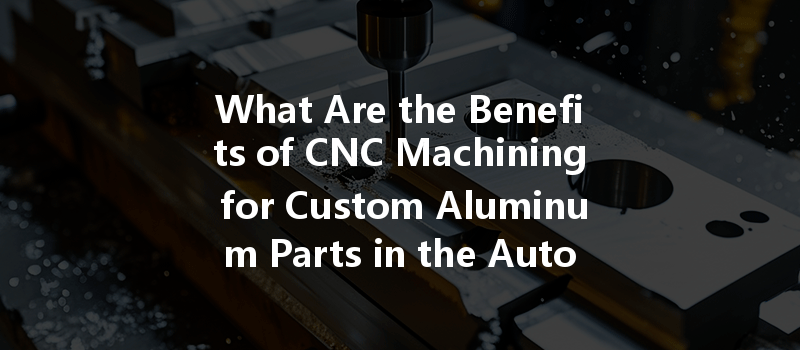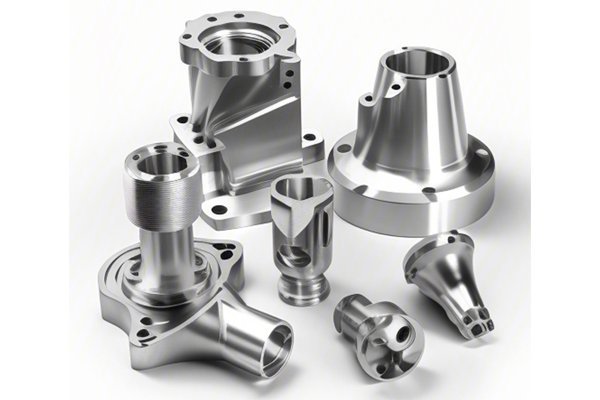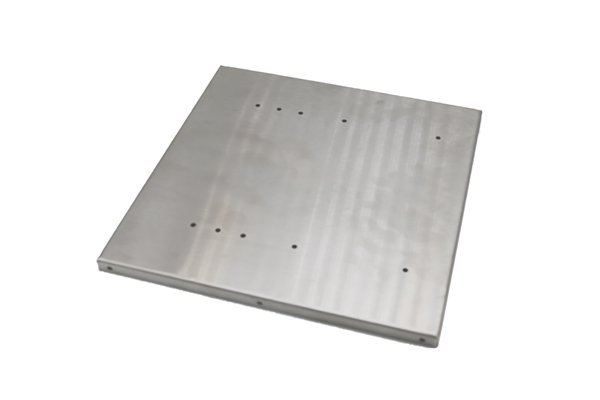: Eye-Opening Facts and Questions
Did you know that the automotive industry is responsible for approximately 2% of global GDP? This sector, which is often seen as a symbol of innovation and engineering prowess, relies heavily on precision manufacturing techniques to meet rising production demands and stringent safety regulations. With advancements in technology, methods like CNC (Computer Numerical Control) machining are revolutionizing how custom aluminum parts are produced, leading to intricate designs, reduced waste, and enhanced efficiency.
As you read on, consider this: How can CNC machining improve the performance and longevity of automotive components while also lowering production costs? In this blog, we will explore the many benefits of CNC machining for custom aluminum parts in the automotive industry, delving into the techniques and solutions that can address common challenges faced by manufacturers today.
CNC machining is a manufacturing process that uses computer-controlled tools to create precise and complex components from a variety of materials, including aluminum. The machinery follows specific instructions from a CAD (Computer-Aided Design) program, allowing for high levels of accuracy and repeatability. This method is crucial to producing custom parts that meet the unique specifications required in the automotive industry.
1.1 The Basics of CNC Machining
Aluminum has emerged as a preferred material in the automotive industry due to its exceptional properties:
2.1 Weight Reduction
Aluminum is approximately one-third the weight of steel, which translates into significant weight savings in vehicle design. Reducing weight can lead to:
2.2 Corrosion Resistance
Aluminum is naturally resistant to corrosion, which decreases maintenance costs and prolongs the lifespan of components, making it an ideal choice for various automotive applications.
2.3 Excellent Thermal Conductivity
Aluminum offers excellent thermal management, critical in areas such as engines and radiators. Its ability to efficiently dissipate heat helps prevent overheating and maintain optimal performance.
2.4 Sustainable Manufacturing
Aluminum is 100% recyclable without any loss of quality. This encourages sustainability, making it appealing in a market increasingly focused on environmental concerns.
One of the main advantages of using CNC machining for custom aluminum parts is the degree of precision it offers. Here’s how:
3.1 Micromachining Capability
Modern CNC machines can handle extremely intricate designs with tolerances in the micrometer range. This capability is critical for complex automotive components that need to fit precisely.
3.2 Quality Assurance Measures
CNC machining integrates sophisticated quality control tools, including the use of coordinate measuring machines (CMMs), to ensure that every produced part meets rigorous standards. This reduces rework and scrap rates.
The automotive field is highly competitive and necessitates the production of specialized parts that cater to specific functionalities. Customization through CNC machining provides:
4.1 Tailored Solutions
Manufacturers can design parts that perfectly match their performance requirements, such as:
4.2 Rapid Prototyping
With CNC machining, rapid prototyping becomes feasible. Engineers can quickly develop and test prototypes of new designs, speeding up the overall R&D cycle and allowing for quicker market introduction.
While the upfront costs of CNC machinery can be substantial, the long-term savings can significantly outweigh initial investments.
5.1 Reduced Labor Costs
Fully automated CNC machining requires less manual intervention, decreasing the number of operators needed and lowering labor costs.
5.2 Lower Waste Production
CNC machining is highly efficient and minimizes material waste by optimizing the machining process. This cost-effective approach results in savings that positively impact the overall budget.

5.3 Increased Production Rates
The speed at which CNC machines operate ensures high production rates. With reduced cycle times, manufacturers can meet higher output requirements without sacrificing quality.
As automotive technologies evolve, so do the software solutions that drive CNC machining. Advanced software applications integrate seamlessly with CAD systems to enhance manufacturing processes by:
6.1 Overseeing Tool Paths
Sophisticated CAM (Computer-Aided Manufacturing) software calculates optimal tool paths, reducing machining time and improving accuracy.
6.2 Simulation Capabilities
Before machining begins, simulation software can predict potential challenges, allowing operators to rectify issues proactively.
6.3 Integration with Industry 4.0
As automotive manufacturing moves towards Industry 4.0, CNC machines can now communicate with other manufacturing systems, enabling real-time data exchange, predictive maintenance, and improved overall efficiency.
Despite the numerous advantages, CNC machining of aluminum parts does come with challenges that require attention:
7.1 Tool Wear and Tear
Aluminum is non-ferrous and can cause rapid wear on cutting tools. To mitigate this:
7.2 Machining Variables
Factors such as feed rate, cutting speed, and depth of cut are crucial in achieving optimal results. Manufacturers must understand how these variables interplay to maximize efficiency.
7.3 Dimensional Stability
Because aluminum expands when heated, maintaining tight tolerances can be challenging.
To illustrate the effectiveness of CNC machining in producing custom aluminum parts, consider two case studies:
8.1 Leading Automotive Group
This company utilized CNC machining to develop custom engine components, moving from initial prototypes to full-scale production within months. The precise control allowed them to optimize performance and fit.
8.2 Electric Vehicle Manufacturer
A trending electric vehicle manufacturer leverages CNC machining to create lightweight, durable battery enclosures out of aluminum. Their approach emphasizes reducing weight while maximizing structural integrity, which is pivotal for battery safety and performance.
As technology advances, we can anticipate several trends that will shape CNC machining:
9.1 Automation and Robotics Integration
The rise of robotics in CNC machining will enable greater efficiency, automation of repetitive tasks, and improved safety.
9.2 Expanded Use of Additive Manufacturing
Combining CNC machining with additive manufacturing could lead to more complex parts being produced efficiently.
9.3 Sustainability Focus
With growing awareness of climate change, manufacturers will increasingly turn to sustainable practices in their CNC machining processes, significantly affecting material selection and production methods.
9.4 Big Data Analytics
Utilizing big data analytics will inform better production decisions, enabling manufacturers to monitor machine performance and predict maintenance needs.
: Why CNC Machining Is Essential for the Automotive Sector
In conclusion, CNC machining offers an array of benefits for producing custom aluminum parts that drive innovation in the automotive industry. From enhancing precision and ensuring quality to enabling rapid prototyping and promoting sustainable practices, this technology transforms how automotive components are designed and manufactured.
As the industry continues to evolve, understanding the advantages and potential solutions that CNC machining provides is crucial for manufacturers looking to stay competitive. The case studies presented reflect real-world applications that underline the importance of this technology, guiding manufacturers toward achieving their production goals while addressing modern challenges.
In light of these insights, it is essential for industry players to consider not only adopting CNC machining techniques but also investing in ongoing training and technology updates to keep up with advancements in this ever-evolving field. By harnessing the power of CNC machining for custom aluminum parts, automotive manufacturers can not only enhance their product offerings but also pave the way for a more sustainable and efficient future in the automotive landscape.






